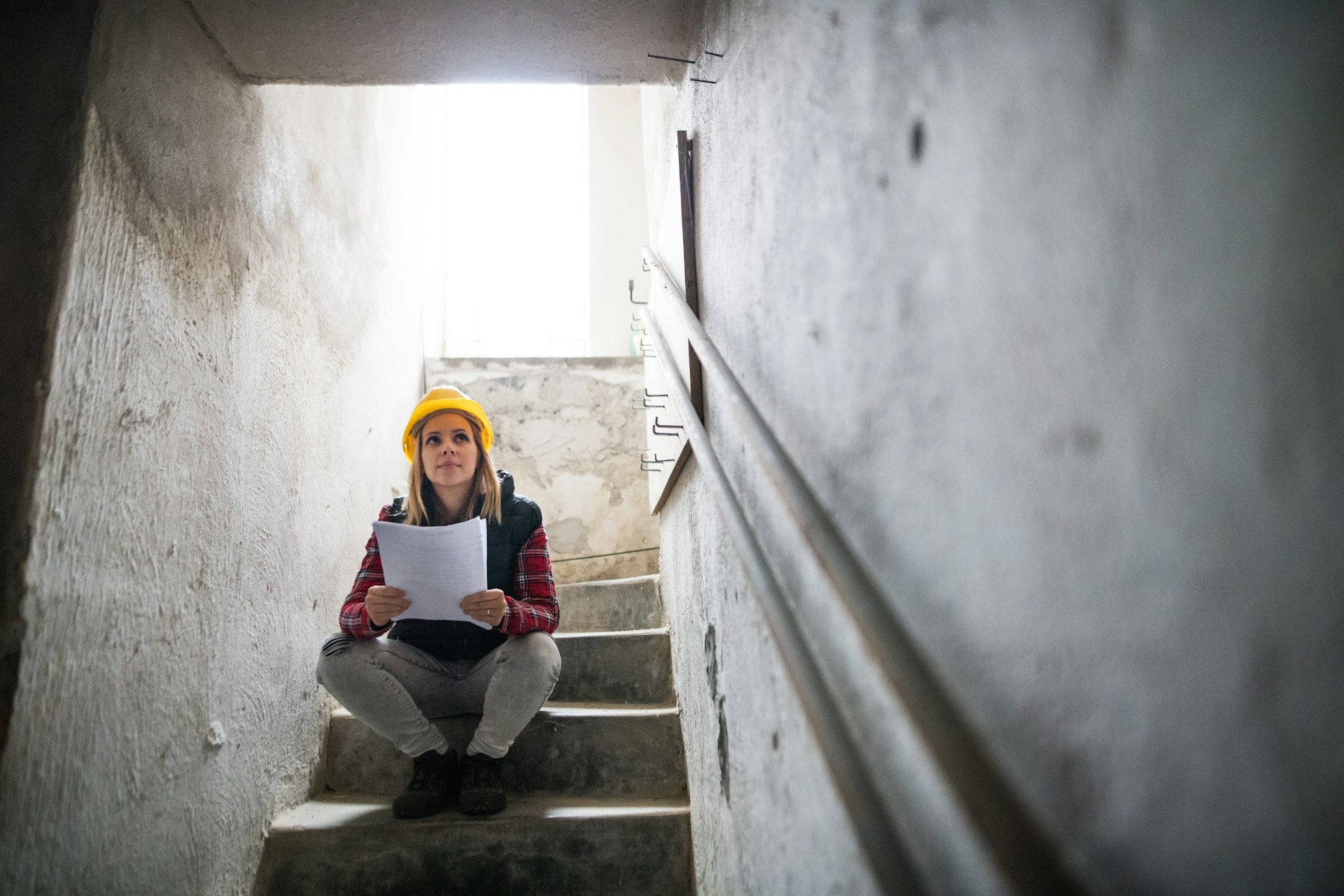Preparedness
Turn Everyday Items Into Unexpected Self-Defense Tools

In today’s world, personal safety is a paramount concern, especially when considering the alarming statistics of crime rates. According to the FBI, there were approximately 1,203,808 violent crimes and 6,925,677 property crimes in 2019. With burglaries happening every 30 seconds in the U.S., it’s crucial to remain vigilant and prepared.
While traditional weapons might not always be accessible, everyday household items can serve as effective tools for self-defense. The key is to use these items to distract or disarm an attacker, allowing you to escape and seek help. Remember, the primary goal is not to engage in combat but to ensure your safety.
In the kitchen, several items can double as defensive tools. A cast iron skillet, for instance, is heavy enough to incapacitate an attacker. Knives, while potentially lethal, can also be used to fend off an assailant by cutting or piercing. Spices like chili powder or pepper can be thrown to blind an attacker temporarily. Vinegar, known for its survival uses, can also act as an irritant. As Divas for Defense notes, “The acidity is an extreme irritant to the eyes and will cause an attacker to be distracted and unable to see.”
In your office, everyday items can become unexpected allies. Pens and scissors can pierce vulnerable areas, while a stapler can be thrown or used as a blunt object. Tools, often associated with safety, can also be repurposed. A screwdriver, for example, can pierce sensitive parts of the body, and gardening tools like shovels or hoes can keep an attacker at bay.
Sports equipment also offers potential defense mechanisms. Bats have been used effectively in numerous situations, such as when a 12-year-old girl held off an intruder. Racquets can prevent close contact, and balls, when thrown accurately, can distract an assailant. Helmets, with their weight and structure, can serve as shields or be thrown for impact.
Don’t overlook the potential of chemicals stored under the sink or in the garage. Fire extinguishers can be sprayed at an attacker or used as a blunt object. Insect sprays, especially those for hornets or wasps, can be effective from a distance. Bleach, hairsprays, and perfumes can also disrupt an attacker’s vision and breathing.
Around the home, other items can be used creatively for defense. Lamps, with their various components, can be wielded as weapons. Hardback books, due to their weight, can be used for striking. Everyday objects like footwear, clothing, and pillows can serve as distractions or shields.
According to SafeWise, “45% of all reported burglaries occurred in the daytime compared to 39% at night,” indicating that such incidents may happen during your daily routine. Thus, even mundane items like hot coffee, candle wax, or a curling iron can be employed in a pinch. An iron, particularly when hot, can also serve as a formidable defense tool.
Ultimately, when it comes to self-defense, anything is better than nothing. A sock filled with pennies, a mascara wand, or even a wire hanger can provide a means to protect yourself. Reusable water bottles, due to their robust construction, can deliver a significant blow. In situations where your hands are bound, shoelaces can be a surprising asset, as demonstrated in various online tutorials.
In conclusion, while it’s essential to prioritize escape and getting help, being aware of the potential uses of household items can offer an added layer of security. Stay prepared, stay safe, and remember that your home is filled with tools that can help you defend yourself if ever necessary.
Let us know what you think, please share your thoughts in the comments below.

Preparedness
Master the Art of Sheltering in Place for Emergencies

When an unforeseen emergency strikes, the directive to “shelter in place” can be a lifesaver. This involves finding a secure indoor location and remaining there until authorities provide an “all clear” or instruct you to evacuate. Such situations can arise from various threats, including active shooters, severe weather, or hazardous chemical spills.
In the event that local officials instruct you to “stay put,” it is crucial to act swiftly. Tune into local radio or television stations for specific guidance tailored to the emergency. Generally, the first step is to get indoors, bringing along your loved ones, emergency supplies, and pets if possible.
Once inside, identify a safe spot within your location. The ideal spot will vary based on the nature of the emergency. Remain in this location until officials confirm it is safe to leave.
Communication is key during these times. Reach out to your emergency contact to inform them of your situation, whereabouts, and the status of all family members. Use your phone sparingly to ensure lines remain open for emergency responders. Keep your phone accessible for reporting life-threatening situations.
Stay informed by continuously listening to updates via radio, television, or phone. Do not exit your shelter until authorities declare it safe. Should evacuation become necessary, adhere to the instructions provided.
In certain emergencies, such as chemical leaks, it is vital to prevent outside air from entering your space. If officials advise you to “seal the room,” take the following actions: turn off air-moving devices like fans and air conditioners, gather your family and supplies inside, and block any air entry points. Await further instructions from officials.
Once the danger has passed, ventilate your space by turning on fans and other air circulation devices. Everyone should step outside until the building’s air has exchanged with fresh outdoor air.
Preparation is essential for effective sheltering in place, particularly during a chemical attack or leak. Select a room in your home with minimal windows and doors, such as a master bedroom with an adjoining bathroom. For chemical events, choose a room on a higher floor to avoid sinking vapors, unlike other scenarios where lower levels are safer.
Avoid using vehicles as shelters unless absolutely necessary, as they are not airtight enough for chemical protection. If you find yourself needing to shelter in place at home, stock your designated room with essentials such as a flashlight, battery-powered radio, extra batteries, bottled water, and non-perishable food. If bottled water is unavailable, toilet tank water is a viable alternative, but avoid tap water.
To seal the room, pre-cut plastic sheeting to fit windows and doors, securing it with duct tape to create an airtight seal. Cover vents and electrical outlets as well.
If caught in an emergency while driving, and you cannot reach a safe indoor location, pull over to the side of the road, stop the engine, and stay put until it is safe to proceed. Seek shade if it is warm to prevent overheating. Keep your radio on for updates, as modern car radios consume minimal battery power.
Even after receiving clearance to resume travel, continue listening to the radio and follow law enforcement instructions. For a comprehensive guide to preparedness, FEMA offers a free PDF booklet that serves as an excellent resource for starting your journey towards being prepared.
Let us know what you think, please share your thoughts in the comments below.
Preparedness
Homesteaders’ Secret Weapon for Success and Survival

Homesteading is often synonymous with self-reliance, but even the most independent homesteaders need a supportive network. While the dream of living off the land is appealing, the reality can be isolating. It’s crucial to recognize that no one can handle every challenge alone. A strong community is invaluable for both daily support and in times of crisis.
A homesteading community offers a wealth of knowledge and experience. When questions arise, having a group of knowledgeable peers to consult can be a game-changer. Beyond practical advice, these connections provide companionship, easing feelings of loneliness and isolation.
In times of need, a community can be a lifeline. Whether it’s bartering goods, lending a hand with a difficult task, or offering support during a disaster, having a network to rely on is essential. “If you experience a disaster, those closest to you will help you pick up the pieces.”
Building a community doesn’t happen by accident; it requires intentional effort. As adults, forming new bonds can be more challenging than it was on the playground. However, with purposeful actions, these connections can flourish.
Begin by getting to know your neighbors, even if they aren’t fellow homesteaders. They can be your first point of contact in emergencies and may become unexpected allies. Shopping locally is another excellent way to forge relationships. Frequent visits to local farms and markets allow you to meet and support small business owners.
Seek out like-minded individuals by attending events such as gardening classes at the library or visiting the farmers’ market. Online platforms like Meetup and Facebook also offer groups where you can connect with local homesteaders. “Find Like-Minded Individuals: Be intentional about seeking out fellow homesteaders.”
Don’t hesitate to ask for help when needed. People appreciate being needed, and reaching out can open doors to new friendships. Sharing meals is another powerful way to build community bonds. Inviting neighbors or fellow homesteaders for dinner or a potluck can quickly turn acquaintances into friends.
To strengthen these connections, contribute what you can to the community. Whether it’s sharing excess produce, offering skills like knitting, or helping with a neighbor’s big task, every contribution counts. “Find Something to Contribute: Do you have an abundance of fresh produce? Do you have honey from beekeeping?”
Finally, don’t forget to have fun together. Organizing activities like outdoor picnics or games can transform casual relationships into supportive networks. “If you want to move from casual acquaintances to people you can turn to in a crisis, find ways to have fun together.”
If you’re wondering where to find these like-minded individuals, consider visiting local farmers’ markets, libraries, or farm supply stores. Livestock auctions and community-supported agriculture (CSA) groups are also excellent places to meet fellow homesteaders.
By intentionally building and nurturing a community, homesteaders can enjoy the benefits of shared knowledge, support, and friendship, making the journey of self-sufficiency a little less solitary.
Let us know what you think, please share your thoughts in the comments below.
Preparedness
Beat Cabin Fever with These Seven Simple Strategies

Isolation isn’t a natural state for most of us. As inherently social beings, we thrive on interaction and community. This is why extended periods of staying at home can be challenging, regardless of the reason behind the isolation.
The term “Cabin Fever” describes a common reaction to being confined indoors for a period, often due to circumstances like quarantine or adverse weather. The symptoms extend beyond mere boredom and are deeply rooted in feelings of isolation, which can manifest as distrust of those around you.
The impact of cabin fever varies from person to person. While some find solace in projects or creative outlets, others struggle with the day-to-day until the feelings subside. Here are seven strategies to help cope with cabin fever:
Firstly, connecting with nature can significantly uplift your mood. Fresh air and sunshine are crucial for mental health. If you’re unable to go outside, try to bring nature indoors.
“Open your windows – whenever possible allow the fresh air indoors.” This not only introduces fresh air but also helps release built-up toxins from manmade items in your home.
House plants can also be beneficial, as studies suggest that “having living green plants in an environment helps to reduce stress.” If greenery isn’t an option, watching nature shows or travelogues that feature expansive outdoor scenes can be a good alternative.
Exercise, whether indoors or out, is another effective strategy. Physical activity, such as dancing or following an online workout, can alleviate restlessness and boost your mood by getting your heart pumping and blood flowing.
A structured daily routine can also help combat the disruptions in eating, sleeping, and activity patterns often caused by isolation. Establishing a schedule that includes work, meals, exercise, and downtime can provide a sense of normalcy and purpose.
Staying connected with loved ones is vital. In today’s world, there are numerous ways to maintain contact, such as phone calls, video chats, and emails. However, “sometimes a good old-fashioned hand written letter can do you, and the recipient a world of good.” It shows care and offers a personal touch that digital communication often lacks.
Maintaining normal eating patterns is equally important. While it might be tempting to indulge in junk food or skip meals, a balanced diet can enhance energy levels and motivation. Monitor your eating habits to ensure proper nutrition, and remember to stay hydrated.
Engaging your mind with activities like crossword puzzles, reading, or board games can keep feelings of isolation and helplessness at bay. While TV can be a distraction, it often lacks the mental stimulation needed to move forward positively.
Lastly, if you share your space with others, it’s crucial to carve out some personal time. Whether it’s reading, meditating, or listening to a podcast, having moments to yourself can help manage the intensity of cabin fever.
If you find that your symptoms are worsening and coping mechanisms seem ineffective, consider reaching out to a mental health professional. They can help you understand your experiences and work with you to find ways to overcome these feelings and any underlying anxiety.
Let us know what you think, please share your thoughts in the comments below.
-

 Tactical1 year ago
Tactical1 year ago70-Year-Old Fends Off Intruder with Lead-Powered Message
-

 Tactical1 year ago
Tactical1 year agoVape Shop Employee Confronts Armed Crooks, Sends Them Running
-

 Preparedness11 months ago
Preparedness11 months agoEx-Ballerina’s Guilty Verdict Sends Tremors Through Gun-Owner Community
-

 Preparedness9 months ago
Preparedness9 months agoGood Samaritan Saves Trooper in Harrowing Interstate Confrontation
-

 Tactical1 year ago
Tactical1 year agoMidnight SUV Theft Interrupted by Armed Homeowner’s Retaliation
-

 Survival Stories2 years ago
Survival Stories2 years agoEmily’s 30-Day Experience of Being Stranded on a Desert Island
-

 Preparedness10 months ago
Preparedness10 months agoArizona Engineer’s Headless Body Found in Desert: Friend Charged
-

 Preparedness9 months ago
Preparedness9 months agoBoy Saves Dad from Bear Attack with One Perfect Shot